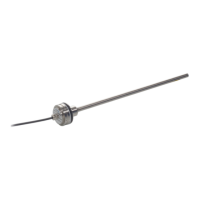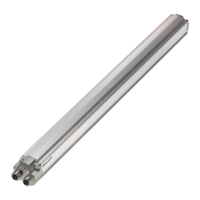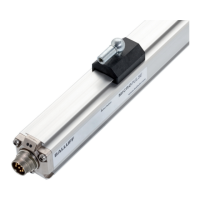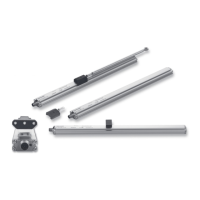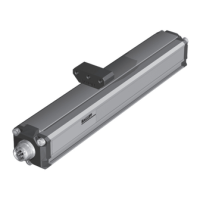1-800-543-8390 • WWW.BALLUFF.COM
8
Micropulse Linear Position Transducer
Absolute Quadrature Output
Rod Style & Profile Style Housings
Function Active Time Notes
Synchronizing
5 μsec to 5
msec
Valid only with synchronous versions (ordering code Qxxx0). In this
mode the internal transducer measurements are synchronized to this
input. The most recent quadrature data is sent out on the rising (active-
to-inactive) edge of this input.
Burst
(Absolute
Position
Query)
100 msec to
1000 msec
(1 sec)
Causes absolute position pulse train to be output. The rising (active-
to-inactive) edge of this input causes a pulse string equal to current
magnet position, referenced to the null point , e.g., 2” from flange face,
to be sent. The location of the programmable Z pulse (see below) is not
considered.
Store Z 1 sec to 5 sec This mode allows the location of the home reference (Z) pulse to be
changed. The rising edge of this input will cause the current magnet
position to be stored as the Z pulse. This setting is stored in non-volatile
memory, so it will be retained after power-off.
Notes:
1. For all Strobe functions, the input is low-active. It is connected to +5V, through a 3.3 kOhm resistor inside the
transducer. The input is active when pulled to 0V (grounded).
2. If the Strobe input is held active (grounded) during transducer power-up, the input is ignored until it goes
inactive. This is a safety feature to prevent unwanted effects (particularly overwriting of the Z pulse position)
in the event of a problem with this input.
Strobe Input Functionality
The active-low “Strobe” input of the Micropulse Absolute Quadrature Transducer performs three
functions:
Absolute Position Output (Burst Mode)
During normal operation, the transducer provides incremental position information. For each position
update, the transducer sends out a number of pulses that represents the change in position since the
previous update. Upon request, however, the transducer is capable of sending out a pulse string that rep-
resents absolute position, relative to the factory-programmed null point. This absolute position request
is called the Burst mode. The burst mode can be used at any time, but is typically used at start-up, or
to periodically verify absolute position. Using the Burst mode effectively eliminates the need to physically
“re-home” a position axis. The Burst mode is activated by holding the STROBE input low for a period of
from 100 milliseconds to 1 second.
Z Pulse Programming
The Z output, sometimes referred to as the marker or index pulse, is only active at one location within the
transducer’s active stroke. The factory default location for the Z pulse is at the Null point (the Null point
is the beginning of the active stroke). The location of the Z pulse is field-programmable, and can be set
anywhere within the active stroke of the transducer. This is accomplished by using the STROBE input.
Holding the STROBE input low for a period of from 1 second to 5 seconds will set the Z pulse at the
current magnet position.
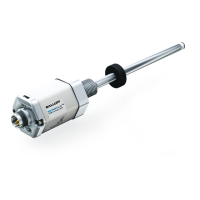
